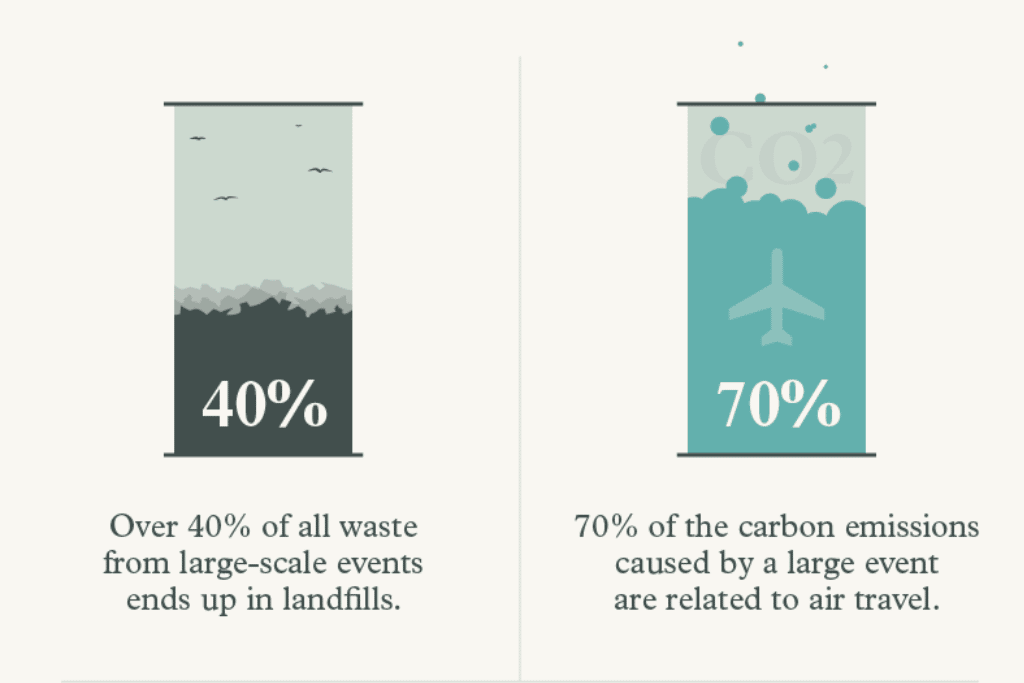To help you celebrate responsibly, here is Paperless Post‘s guide to all things festive and sustainable.
In the midst of planning, prioritising a sustainable event might seem like yet another thing to manage. It also might feel like the impact of your particular event is a drop in the bucket.
However, we’re in a climate emergency and reducing our contribution to the problem is imperative. If all event planners committed to planning sustainable events, their combined efforts would have a meaningful impact on reducing the waste and emissions caused by supplies, venues, invitations, travel, etc related to events.

Making sustainability a priority
Pulling off a showstopping party is already a lot of work. It’s even more when you need to consider the environmental impact of every step.
However, planning your parties and events sustainably doesn’t necessarily mean additional stress. It’s more about making smart choices for the things already on your to-do list. Here are a few ways to get started:
— Use sustainable supplies: Opt for reusable party supplies such as cloth napkins and tablecloths. Aside from helping to eliminate waste, these items can be an excellent way to invest in pieces you love and continue enjoying them at your next event. You can also opt to rent all of your supplies, from tableware to tables and chairs, from event rental companies.
— Choose sustainable vendors: Being mindful of sustainability when choosing caterers and food sources can also have a huge impact on your carbon footprint. Choose local food options when possible. Keep a close eye on your RSVPs and only buy what you’ll need.
— Host your events at green venues: Look for venues that are transparent about how they’re minimizing their impact, such as those with a LEED certification. Buildings that are LEED certified must follow criteria to reduce their energy usage, lower their carbon footprint, minimize waste, and use sustainable materials.
— Encourage guests to use sustainable transportation: Transportation contributes to 29% of all greenhouse gas emissions. To help minimize your event’s impact, choose a location closest to the majority of your guests. Encourage options like walking, biking, carpooling, and public transportation, and provide info on how to travel to your event using these options. For guests who would need to travel long distances or by air, consider offering a virtual option.
— Make a plan to manage waste: Before the event happens, decide how you’ll manage any waste and trash your event does produce. This may include providing recycling and composting bins for event staff and guests to use, or finding a way to donate any disposable decorations and flowers.
— Offset your carbon impact: Even if not every aspect of your event is sustainable, there are still ways to help reduce your carbon footprint. One excellent option is to contribute to a carbon offset project. These organizations use donations to fund tree planting, renewable energy, and efforts to reduce emissions elsewhere.
To find out more about sustainability and events, make sure to read Paperless Post’s full article at: sustainability and events.














